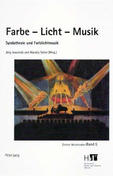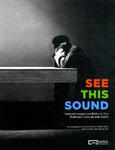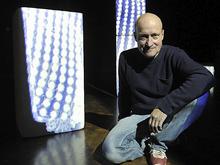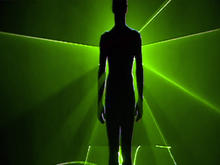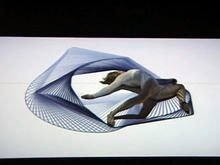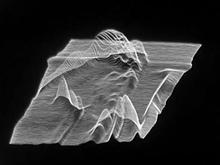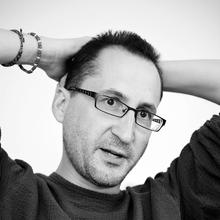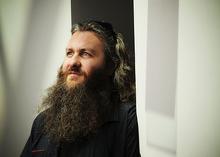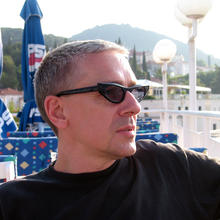White Noise
(2010)is a ballett work by Amy Seiwert (choreography) and her company im'ij-re (that's how you pronounce the word imagery). Interactive system design by Frieder Weiss.
im'ij-re is a contemporary ballet company in San Francisco directed by Amy Seiwert. Holding the belief that ballet has an expressive and vital voice relevant for our current time, respect is held for swans and sylphs, but they are not where the company’s interests lie. Having no desire to regurgitate art, im'ij-re’s artists share the belief that through collaboration and experimentation with artists of other discplines, vibrant and courageous ideas can be expressed. Habitual reactions are discouraged.
Source: Frieder Weiss
The final performance of the 2010 Festival is a landmark collaborative project between im'ij-re artistic director, choreographer Amy Seiwert and Frieder Weiss of Nuremburg the author of EyeCon and Kalypso, video motion sensing programs especially designed for use with dance, music and computer art. White Noise focuses on the human urge to polarize versus unify. The phrase, "I'm right, you're wrong" paints a black and white worldview caught in duality, where ideas are clung to and value systems point out differences rather than connections. Just as all sound can be canceled out with the presence of white noise, a question will arise as to whether the serene state is transcendent or dismissive.
Source: dance-tech.net
Stav Ziv: Can you tell me a bit more about your company im'ij-re and the collaborative and experimental work you do in that context, and how it might differ from something you would create with Smuin or another ballet company?
Amy Seiwert: im'ij-re is a great experiment. Its primary goal is to collaborate with artists of different disciplines. For example, last year, we collaborated with Frieder Weiss on White Noise. Frieder is a software engineer, and he creates interactive systems. We worked between a camera, lit the site with infrared and projected back onto the dance what the camera had caught, utilizing whatever systems he had written for that moment in music and choreography. The whole thing was time-coded. This is something that a lot of traditional ballet companies would not be interested in. The collaborations are about broaching artistic boundaries and bridging communities. Why can’t ballet be with a spoken word artist or a software engineer? It doesn’t always have to be to classical music with a tutu.
Source: Stanford Arts Review
